For parents of adults with disabilities, the path to an independent future is never without obstacles. Planning for the future requires dozens of extra steps that parents of adults without disabilities may never encounter. From developing trusts to drafting letters of intent, protecting the future leaves so many questions to answer. Yet one question stands above many others: When should families begin to consider independent housing for their loved one?
The answer? As soon as possible.
Reasons To Start Planning Today
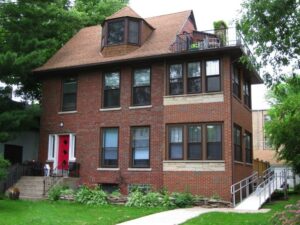
Planning for the future is not a linear process with each step laid out for families to follow. As time passes, systems change alongside changes in perception. In the past, families expected their loved one would continue to live with them or maybe in a group home.
While many people with disabilities have lived with their family and may continue to, there are several reasons why this option is not as feasible as it once was.
Relying on Family
Unlike in the past, adults with disabilities are outliving their parents. For the first time, parents may pass at 80 years old, but their adult child with disabilities might be only 60 – and very ready to live a full life. But now, without their parents, the individual lives without parental support and without their family home to go to.
Families often plan for their disabled son or daughter to live with a sibling, but data tells us that sometimes this doesn’t work out. 50% of siblings say they plan to co-reside with their sibling. Only 10% actually do. These stats don’t tell us why this happens. However, they do tell us that we shouldn’t completely rely on siblings to become caretakers once parents have passed.
Relying on Government Support
Most families of individuals with disabilities know that relying on the government for support isn’t reliable. Few know just how unreliable this option is.
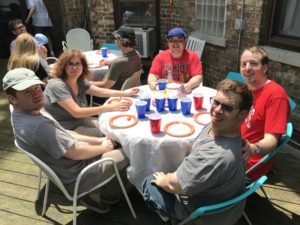
Only 25% of individuals with disabilities receive any financial government supports. Of that small percentage, 71% receive SSI/SSDI benefits, 44% receive Medicaid waivers, and only 15% receive vocational rehabilitation support. So what does this mean?
It means that your loved one cannot necessarily depend on receiving financial support from the government to live in the community when you’re gone.
It means that you may be leaving your loved one without options.
It means that the time to start looking at independent living options is now.
The Benefits of Community Independent Living
When individuals with disabilities have the chance to live in small community settings, their quality of life increases. Living in this type of setting increases an individual’s access to not only family & friends but also to medical care, preventive care, and employment opportunities.
With better access to community assets, we see increased life satisfaction in almost every individual we work with. They are able to utilize self-determination skills while gaining new independent living skills like cooking and cleaning.
These benefits of independent living are not simply nice to have. They are the difference between a full life with personal supports or segregated loneliness.
Developing Crucial Personal Support Networks
One more benefit of living in community settings is the chance to develop personal support networks. These networks consist of natural supports, such as family and friends, plus potential employers, local business owners, or even a school crossing guard.
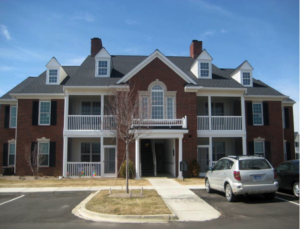
A personal support network consists of anyone in an individual’s community. Part of living independently is community acceptance – and small settings, like an apartment or shared home, often lead to greater acceptance from neighbors.
Finally, living in this type of small, community setting often leads to increased community life participation. This can look like being part of a book club, belonging to a church, or volunteering at the local YWCA.
Each of these increases to quality of life means that an individual’s personal support network is growing. Developing support networks early, before parents pass, means an individual with disabilities can move into the next stage of their life with greater comfort and stability.
Your Next Steps To Independent Futures
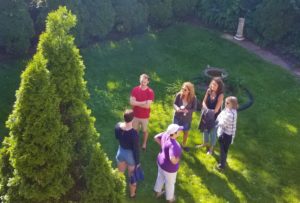 By now, you may be convinced that it is time to start planning for your loved one’s next home. After a few frustrating late night sessions with Google, you realize that finding community housing options for people with disabilities isn’t easy. After you have begun applying for or securing funding, what do you do next?
By now, you may be convinced that it is time to start planning for your loved one’s next home. After a few frustrating late night sessions with Google, you realize that finding community housing options for people with disabilities isn’t easy. After you have begun applying for or securing funding, what do you do next?
1. Build Support Networks
Once your loved one knows what type of community they want to live in, it is time to develop relationships. Before anyone moves and before making any commitments, explore opportunities to get involved. The best way to nurture a relationship is to start with connections.
Is there somewhere your loved one would like to volunteer? Perhaps they want to explore the new library branch? There are many ways to get involved in a community. The hardest part is to start.
2. Focus on Life Skills Development
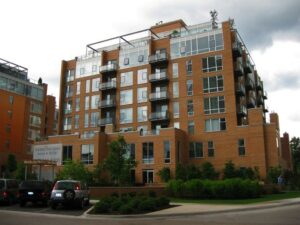
Our Life Skills Tutors are part of our participants’ key to success. At each session, a tutor will help someone with anything from creating a budget to getting their exercise in. Our Full Life Model illustrates that each aspect of a full life is equally important to another. For example, we know that developing friendships is just as important as creating good nutritional habits.
To start working on life skills development, begin by asking some big questions.
- What does the individual dream of doing?
- What skills will they need in order to achieve their dream?
- What skills does this individual already possess?
- What has this person had a chance to learn?
- What can an individual learn?
- What supports does an individual need?
After talking about these questions, start thinking about how you or a personal support worker can help. Some lesson plans exist to help individual with disabilities learn how to do, rather than how we can “do for” them.
3. Research Existing Options
Return to your original Google search. The options that exist may not be the perfect Cinderella fit for your loved one. However, the people or organizations that created them may be able to give you a road map to creating your own solution.
The first step to learning more about existing options is to visit several existing options. Begin talking to other families who have stood where you are standing today. There is strength in numbers, such as shared experiences and knowledge.
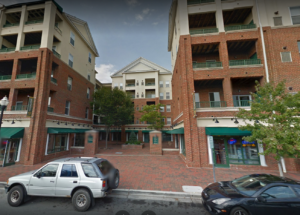
While you are visiting existing housing options for people with disabilities, you will see what an individual’s independent life can look like. Ask your loved one, “If we created our own option, what would you want?” Does that vision include a roommate? A communal space? These are the types of questions to answer before you start building.
The Perfect Storm Is Now
Today individuals with disabilities are included in more opportunities of a full life than ever before. From the time they enter school, there is typically some form of integrated classroom time. When leaving integrated school settings, families and individuals are beginning to demand inclusive options for the future. Whether in the form of community inclusion or employment, it is no longer optional to create inclusive spaces.
Yet, upon leaving school settings, many housing options are not integrated or independent. Though research argues that small community-integrated settings improve quality of life, many existing housing options for people with disabilities are large settings or removed from the community.
Ultimately, families seeking greater inclusion created a large number of the small community settings that exist. Those options have not been available without hard work, dedication, and commitment to independence. If your loved one hopes to live independently someday, the time to start looking at innovative housing options is as soon as possible.
